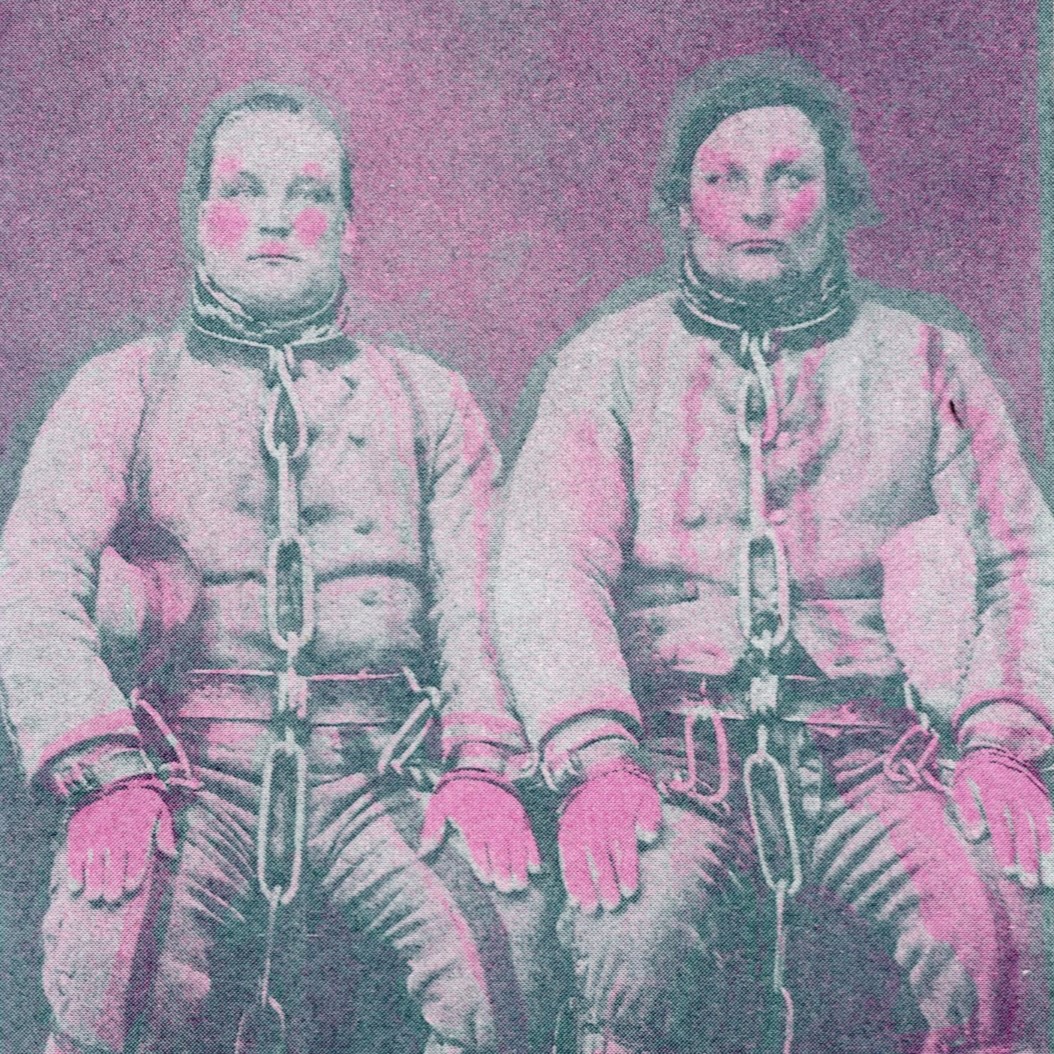Chained to Light tells the story of one of the most famous photographs in Finland
Valoon kahlitut (Chained to Light) is a monument to the career of the pioneer in photography Julia Widgrén (1842–1917). The exhibition pauses to look at Widgrén’s life and photographs, and to examine the worldviews that emerge from behind them. Probably the most famous Finnish photograph taken by Widgrén plays a significant role in the exhibition. In the photograph taken in 1869 in early spring, the famous puukkojunkkaris, or knife-fighters, Antti Isotalo (1831–1911) and Antti Rannanjärvi (1828–1882) pose in chains. Widgrén was only 27 years old at the time. The image quickly brought the young entrepreneur fame and customers, and along with Finnish immigrants it spread beyond the country’s borders. Isotalo and Rannanjärvi are the most famous members of the puukkojunkkaris, knife-fighters, or häjys, “the wicked”, in the Southern Ostrobothnia region in the 19th century. The puukkojunkkaris were infamous troublemakers and criminals, who even still have a legendary reputation.
Chained to Light takes an exploratory approach to Julia Widgrén’s extraordinary life and career. The focus of the exhibition revolves around the development of photography in Finland, women’s active role in the early photography, and images of people in the countryside, especially women. In the exhibition, archival photographs, objects borrowed from museum collections and historical narratives of the 19th century, told through Julia Widgrén’s life and career, are juxtaposed with works by contemporary artists.
The exhibition has been created by a multidisciplinary team of artists Anne-Mari Ahonen, Hanna Koikkalainen and Hanneriina Moisseinen, curator Heta Kaisto, and journalist Anne Puumala. The exhibition includes photographs, drawings, installations, and video works. Hanneriina Moisseinen’s artworks highlight the chain of generations from a woman’s perspective, the fates of the destitute and rural women of the 19th century, and the world of those living in captivity. Anne-Mari Ahonen’s works highlight the links between the ordinary women depicted by Widgrén and the changes in the status of women in society, celebrating Widgrén’s life and career. Hanna Koikkalainen’s works are based on Widgrén’s portraits of prisoners, working-class women, and young brides.
The exhibition also peeks behind the iconic photograph of Isotalo and Rannanjärvi. Curator Heta Kaisto’s video essay opens the story behind the photograph and suggests ways of looking at it. Anne Puumala’s essay delves into the meanings of the photograph in our time and deepens Julia Widgrén’s story. The famous portrait also lives through the artists’ new interpretations Häjyvariaatiot (2024), which emphasizes femininity and sensitivity rather than masculinity and defiance.
The exhibition is open in the Vintti exhibition space 7.12.2024 – 19.4.2025.






